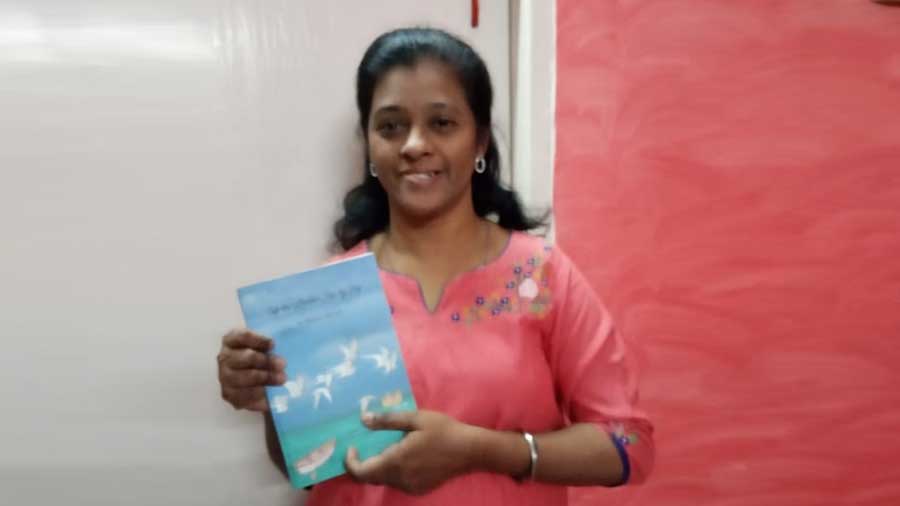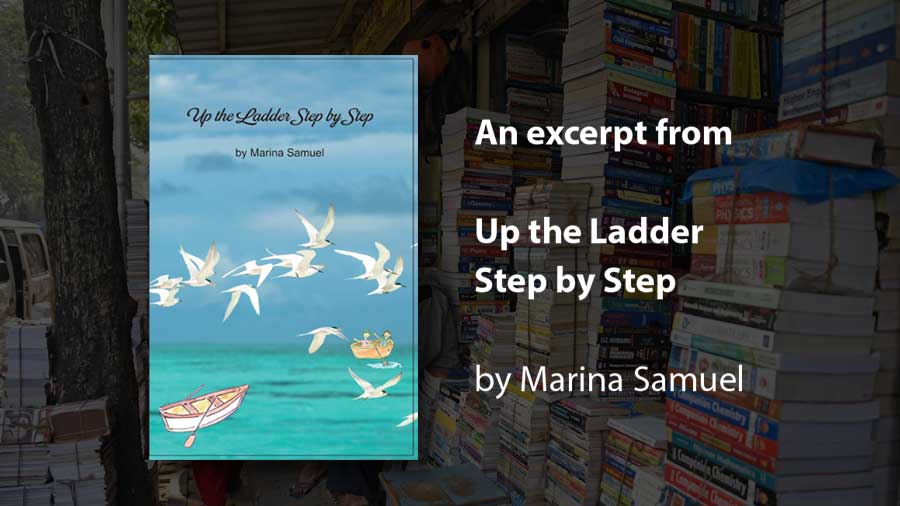Marina Samuel’s Up the Ladder Step by Step is a lesson in the power of grit and perseverance in the face of adversity.
Born with physical disabilities, Marina’s journey from childhood to adulthood is one that has been riddled with various hurdles and complications. Today, she is working at the Tata Medical Institute and has successfully carved out an unrestrained life for herself – a journey that she takes immense pride in.
In this autobiographical account, she details the adjustments, achievements and failures that she has had to encounter in her personal as well as professional life, weaving them together with pertinent questions about inclusion and the lives of people with disabilities. “People often forget that those with disabilities also want what everyone else wants,” says Marina. In writing this book, she aims to shine a light on some of the experiences and struggles that she has had to overcome in order to get where she is today.
Marina’s book sends out a much-needed message of hope at a time when despair and uncertainty loom large over our everyday lives, owing to the Covid-19 pandemic. “You may lose hope but you should never give up. Each person shall find their way,” she promises.

The author holding a copy of the book
The following excerpt has been taken from the first chapter titled Earliest Memories.
Months passed, time went by, but I was still unable to walk. In time however, I could crawl! It was not in the normal way but I was good at dragging my legs along the floor. My mother and brother still tell me when they talk of my younger days that I would crawl quite fast from one room to another, wearing a bib around my neck to catch my dribbling – I definitely got where I needed to go! They explained how my meals still had to be fed to me and that it took such a long time for me to eat as I did not know how to swallow. My mother tried to show me by making me imitate her but I could not follow her instructions, and hence I had my own slow pace (Sorry for that, Ma!) Despite all my special habits and qualities, I gradually became the favourite child in my neighbourhood with everyone showing their love for me and all the children coming forward to play with me.
I was now almost three years old but still unable to walk. My grandfather met with some relatives who knew about and understood the daunting situation my mother was facing. They advised him to take me to the Assembly of God Church Hospital to meet Dr. Dadina, a famous child specialist at that time. The very next day my mother carried me there accompanied by my grandfather, and it was then that Dr. Dadina told my mother that I was a special child, a ‘spastic’. This word ‘spastic’ was completely new to my mother. Later, when she was explaining to everyone at home that the doctor had told her I was a spastic child, they mistook it to be “plastic child”, which we now find very amusing! Dr. Dadina advised my parents that I should be taken to meet Mrs. Sudha Kaul, a dynamic lady who had founded an organisation called The Spastics Society of Eastern India, situated on Ballygunge Circular Road. It was quite far from the hospital but my mother and grandfather decided to go immediately, and actually walked all the way – me being carried in my mother’s arms! I can only imagine now how tiring it must have been for her. On arrival, they were surprised to find that the place was in a Nissen Hut inside the military camp. The Spastics Society ran a school where children with physical and learning difficulties could receive specialised training and their parents could be advised about the best ways to assist their children. At the meeting with Mrs. Kaul, my mother and grandfather were relieved to discuss my problems with her and receive helpful advice. They were delighted when she immediately granted me permission to join the school that would really change my life.
So . . . Marina was to go to school! My very earliest memory is of the red tiffin carrier my father bought me and the matching red basket I carried as my school bag. Everyone at home was overjoyed that I was going to be able to go to school. They helped me get ready for the next day, but the next morning . . . I didn’t want to go! I remember my father told me, as I took the red tiffin carrier in my hand and played with it, that I could only have it if I went to school.
On that first day of school, I started crying in fear that I would never return home again. I missed my mother and cried nearly the whole day long, sitting on a red wooden chair. My uniform was a red-and-white checked dress with big black boots which held my feet straight, and I wore a grey sweater in the winter. Gradually, I started using the school bus. My mother would carry me from home and lift me up to the bus attendant who would carry me to my seat and secure me with straps.
I was put into several therapies, including physiotherapy, speech therapy, swimming, and feeding therapy. With time, I even learned to walk, to speak fairly clearly, and to feed myself with a spoon. I had to wear gaiters on my legs and did a lot of walking and balancing exercises during my physiotherapy classes with my teacher, Oli Aunty (Oli Banerjee). She would put me on a balancing board and hold my hands but would later leave me for a few seconds to see if I could balance on my own, all the while continuing to joke and have fun with all the students.
Up the Ladder Step by Step has been published by Hyam Enterprises.
Orders for the book can be placed via their Facebook Page
